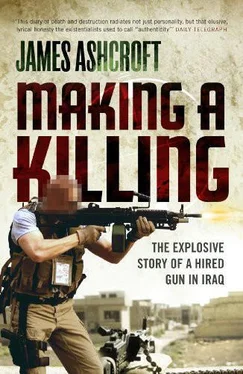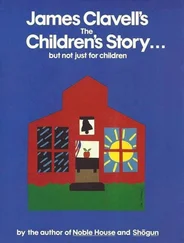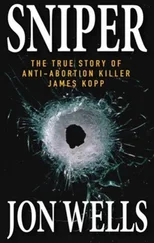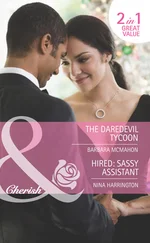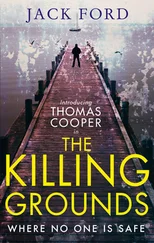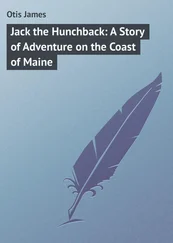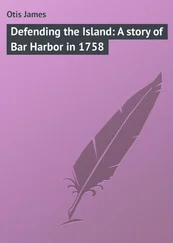No big deal. But in my experience, when things start out bad, even just a tad, they tend to get worse.
We piled into the vehicles and skirted the perimeter fence heading for the military airfield on the other side.
Seamus was in a bad mood. ‘Give it some gas, Rupert ,’ he said and I dropped a gear and put my foot down.
I was driving the Opel, Seamus at my side, Les in the rear. The Yaapies were in the Nissan behind; there was no discrimination in this, no apartheid, it was just easier for them to be able to speak their own language. We called the South Africans Yaapies, pronounced ‘Yar’◦– as in ‘yard’◦– because they were very agreeable guys who said Ja, Ja , no matter what the question, no matter what the answer. For some reason, young British officers got the moniker Rupert , which was unfortunate if you happen to be named Rupert.
We screamed to a halt at the Coalition Forces checkpoint where a pair of soldiers from 82nd Airborne, who looked about twelve years old, chewed their gum as they checked out our Ray-Bans and Oakleys with a lot more interest than our IDs.
‘Have a good one,’ said one of the guys and waved us through.
‘Fuck me, does his mum know he’s out here?’ asked Les as we drove off.
It was another ten-minute drive through the sprawling environs of Camp Bristol, Camp Slayer and Camp Victory, named, I’m told, without irony. GIs with tattoos and jackets tied around their waists were shooting hoops, tossing balls, smoking and looking bored. War’s a cakewalk, the colonel had said to me, but bringing democracy to the lucky people of Iraq was going to cost◦– money, time and lives. There were almost 10,000 soldiers based at the airport, where the containers stamped Department of Defense and the prefab warehouse full of army issue coffins gave a distinct feeling of permanence. There were few planes that we could see, compared with the number of land forces, and the big Abram M1 tanks were lined up as if ready for the apocalypse.
By the time we reached the military airport we were long overdue and a solitary woman was waiting outside on the tarmac with two pieces of luggage at her feet and a cigarette burning in the crook of her fingers. I leapt out of my seat looking contrite the moment I stopped.
‘Lori Wyatt?’ I asked.
‘That’s me.’
‘James Ashcroft. Spartan,’ I said. ‘We’re late, I’m so sorry.’
She glanced at the two vehicles and the six of us manning them.
‘It happens,’ she replied, and stamped out her cigarette.
Lori Wyatt was a slender brunette of around thirty with pixie hair and inquisitive dark eyes. She was looking relaxed in sand-coloured cargo pants and a tan safari jacket. She had a deep, East Coast accent and was by far the most attractive woman I’d seen in Iraq since I’d crossed the desert from Jordan three weeks before with Les Trevellick and an Iraqi driver who drove with the gritty determination of the deranged.
Lori had hitched a ride out of Kuwait on a military transport plane. She had covered the aftermath of the war in Afghanistan for Associated Press and was in Iraq on the same kind of assignment, not embedded, which gave her less access but greater freedom, although freedom in a limited sense. All news from Iraq was filtered through a soft-focus lens. Journalists may have wanted to get to the heart of the story, but had neither the time nor the autonomy to make lasting contacts and interview the insurgents to tell their side of the story. What drives young men to leave their own country and become suicide bombers in Baghdad? There were probably as many answers as there were volunteers but the big picture, the underlying cause, had yet to be fully explored. Reporters who got too close ended up being kidnapped, ransomed or beheaded for Internet snuff movies.
Lori travelled with a laptop, a satellite phone and a Bergen, a hiker’s rucksack◦– lightweight kit. With the introductions sorted, Les slung the gear in the back of the Opel. Just as Lori was a stunner, Les Trevellick was something of a ladies’ man and grabbed his place in the back seat beside her. When we had told him he was going to be the nominated bodyguard for the job we had not expected Lori to be quite as attractive.
As I fired the engine, he began his briefing.
‘Nothing is going to happen, but if it does, just do exactly what I say. You get down flat. Make yourself as small as possible. You only move if I tell you to move.’ He softened his voice. ‘Don’t worry about a thing, I’ll look after you, all right, love?’
‘Got it,’ she said.
Les took a Glock from the pocket behind the driver’s seat. ‘Are you familiar with firearms?’
‘No. And I don’t want to be,’ she replied. ‘It makes us a target.’
In the first two years of the ‘peace’ in Iraq, more journalists would be killed than in twenty years of guerrilla war in Vietnam and five years of civil war in Yugoslavia. New millennium. New war. New rules.
‘If you’ve got a white face you’re a target,’ Les told her and we all took a beat to wonder if she truly realised what she had got herself into.
I was driving slowly through the shuffling army of off-duty soldiers back to the checkpoint where the guys chewing gum waved us straight out on to the BIAP road, the Baghdad International Airport Highway, or Route Irish, to give the road its military designation. This was the main feeder highway into the west of the city and stretched between the US beachhead at the BIAP and the Coalition Provisional Authority. It was the most dangerous stretch of road in the world and despite a massive deployment of Coalition troops and armour, people were dying on this road every day.
The sky was low and oppressive, the same dull, uniform grey it was every day. ‘Reminds me of bloody Dartmoor,’ Les had said on our journey from Jordan. I had expected to see blue skies, especially in the desert, but the wind whips the dust into the air and spins it into a fine layer that hangs over Iraq like a veil.
Highways from airports in the developing world are often wide, well made and designed to impress visiting dignitaries. Route Irish was no exception. Along each side of the road there was waste ground and scrubby bush. The nearest buildings were between 100 and 200 metres away, terraces of three-storey blocks with flat roofs in muddy brown, the same colour as the local stone, the same as every building in the city.
There were flyovers crisscrossing the highway, the cement ramparts ideal for mounting an assault or dropping unpleasant items on Westerners driving underneath. The principal danger was close-quarter attacks from other vehicles or from an IED (improvised explosive device) planted on the side of the road: a buried artillery shell, a parked or abandoned car packed with explosives, or a device concealed in debris, a dead dog, tumbleweed, a plastic bag, of which there was an endless supply skipping across the open spaces.
Most of the locals were incredibly ignorant, but I never confused this for a lack of intelligence. Over the next year we would see the insurgents move from basic IED attacks on Coalition cordons to more complex, well-planned ambushes with multiple elements, secondary shoots and additional IEDs or mortars. What we had seen the IRA over the water develop during thirty years of the Troubles would be learned by the jihadis in a matter of months.
In an urban environment the thing to expect is to be hit anywhere in a 360° arc, another lesson learned in Northern Ireland, where I had been shot at for the first time and discovered that it isn’t so bad as long as you hear it coming. Soldiers are told to welcome the sound of explosions and incoming shots, the premise being that, if you can still hear, the enemy must have missed, so you are alive and free to react and fire back.
Читать дальше
